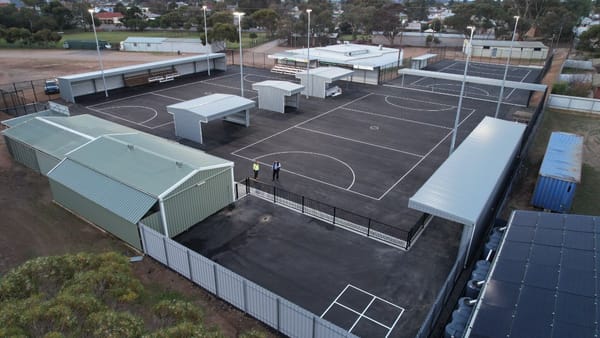Get ready for an especially hot, dry summer in the Murraylands
El Nino or no El Nino, the Murraylands is in for a hot, dry summer, says Bureau of Meteorology climatologist Jonathan Pollock.

Locals support locals – that’s why this recent post is now free to read. Your support can help Murray Bridge News tell important local stories. Subscribe today.

The Bureau of Meteorology hasn’t officially declared an El Nino yet, but the Murraylands is in for a hot, dry next few months either way.
So says climatologist Jonathan Pollock, looking at the bureau’s projections for September to November.
During the spring in Murray Bridge, we can expect:
- A 93 per cent chance of higher-than-usual daytime temperatures
- A 66% chance of unusually hot temperatures, at least 0.7 degrees warmer than usual
- A 46% chance of unusually low rainfall, at least 20 millimetres less than usual
Similar conditions were forecast across the Murray-Darling Basin, meaning there was next to no chance of a second year of flooding along the River Murray.
Locals support locals. Your support helps Murray Bridge News tell important local stories.
“Spring is likely to be drier than average, particularly across the southern parts of the basin,” Mr Pollock said.
“We’ve come off the back of quite a dry July for a lot of southern Australia, including the Murraylands, and it has also been very warm.
“It was the 10th warmest July for South Australia, going back to 1910.”
In fact, on a global scale, July was the hottest month in modern history.
“We’ve already seen some changes across our region (due to climate change): a reduction in cool-season rainfall – that’s likely to continue – and … a big increase in both maximum and minimum air temperatures,” Mr Pollock said.
“The decline in rainfall is absolutely driven by global warming.
“But not every year is going to be dryer and warmer than the last one – there’s still a lot of natural variability.”
The bureau’s most recent state of the climate report noted that “the severity of impacts on Australians and our environment will depend on the speed at which global greenhouse gas emissions can be reduced”.

How do forecasters predict the future?
The bureau’s climate modelling took a range of factors into account, Mr Pollock said, from sea surface temperatures to atmospheric measurements.
These were all plugged into a supercomputer which accounted for the way each of those factors would feed into each other over time.
“As the science develops, hopefully we can do a better job of forecasting months and seasons ahead,” he said.
“With the current state of the science at the moment, there’s a lot of work to do to match people’s appetite for forecasting risk with accuracy.”
- More information about the seasonal climate forecast: www.bom.gov.au.
- More information about the El Nino outlook: www.bom.gov.au.





